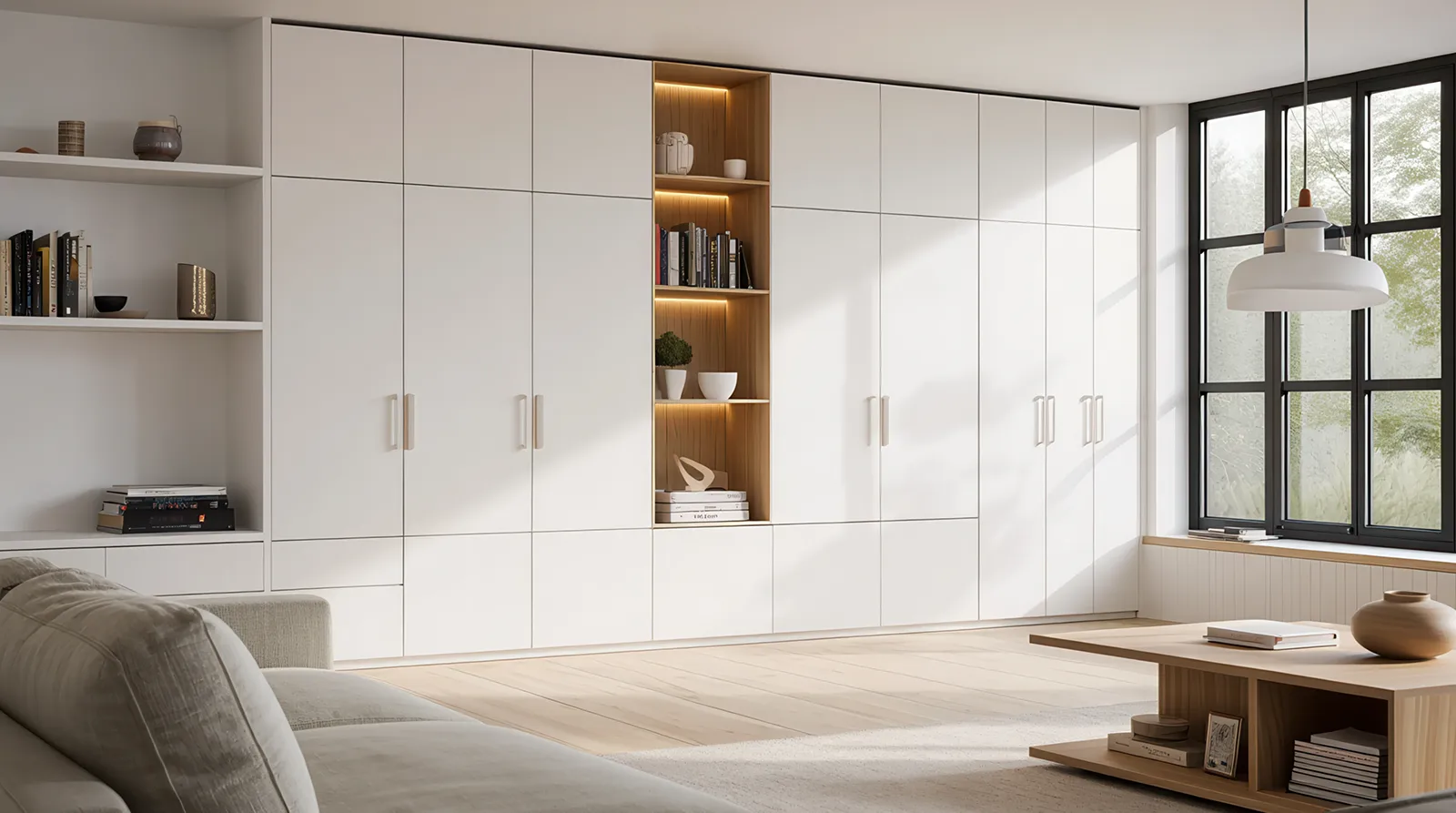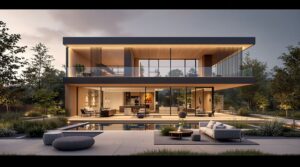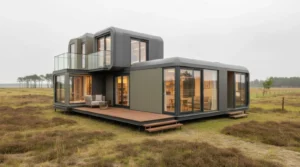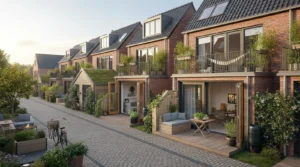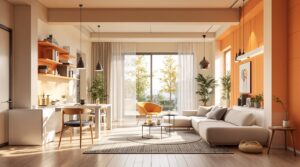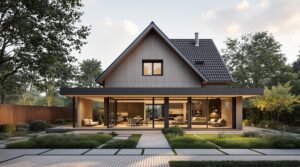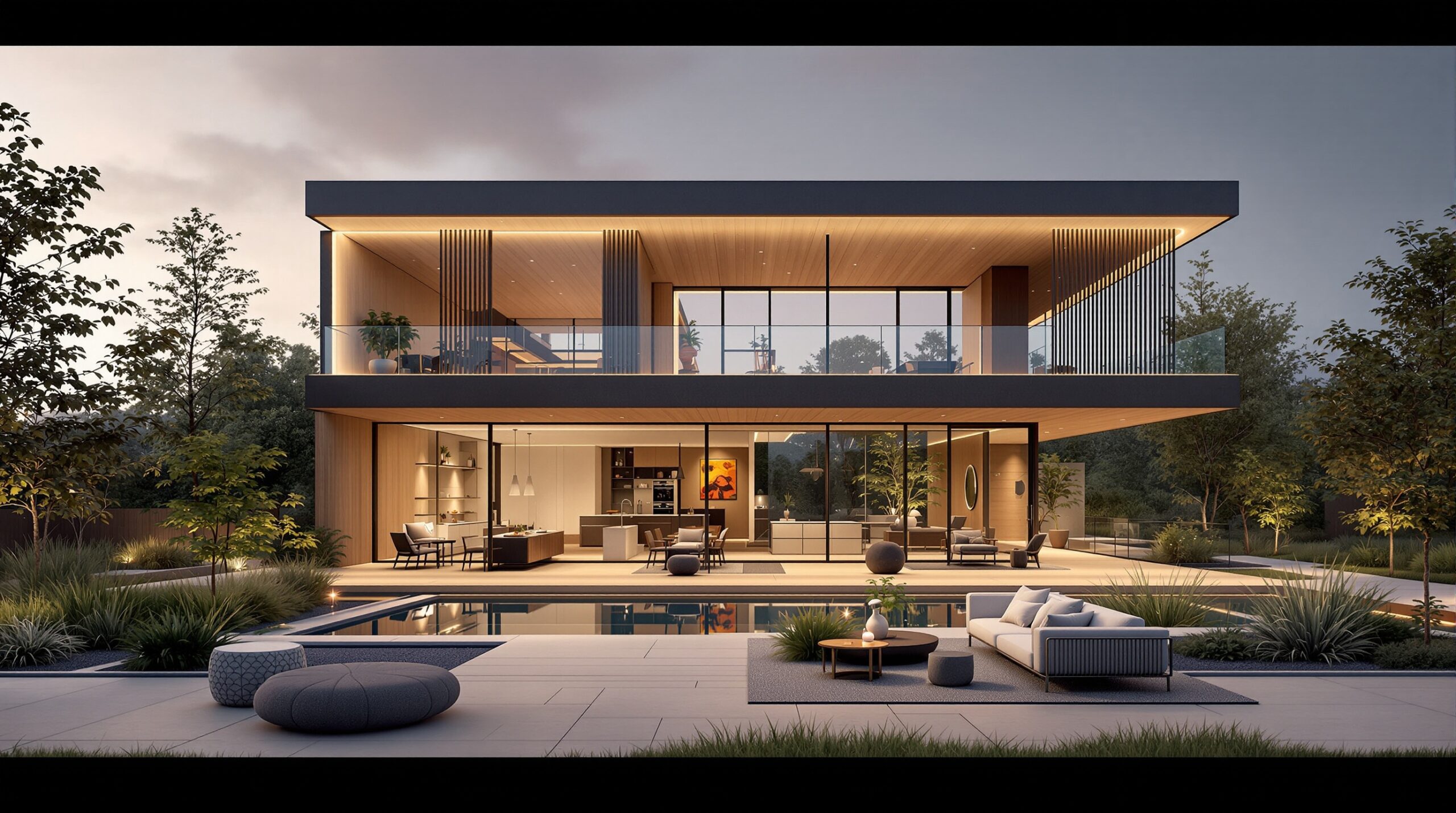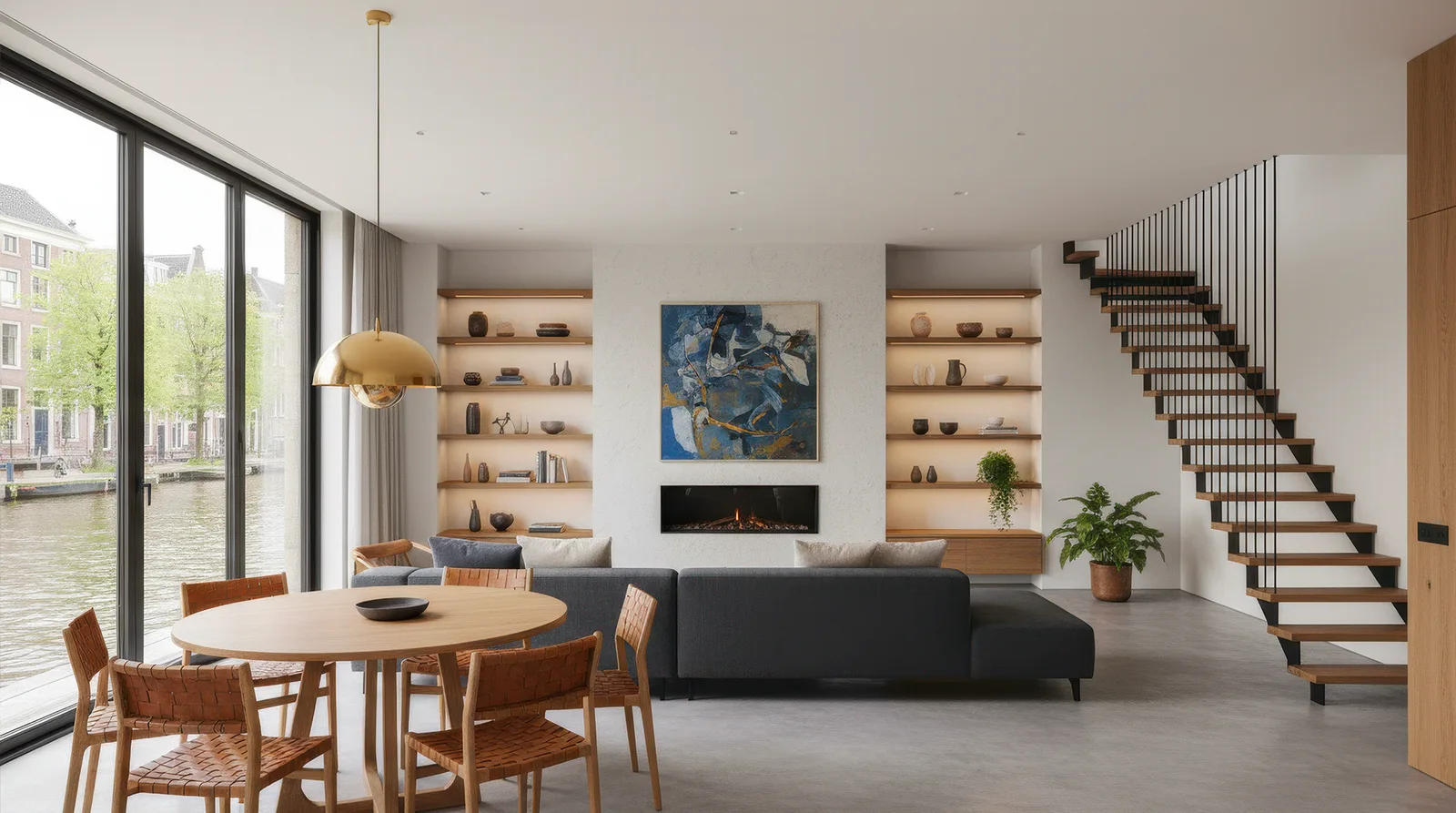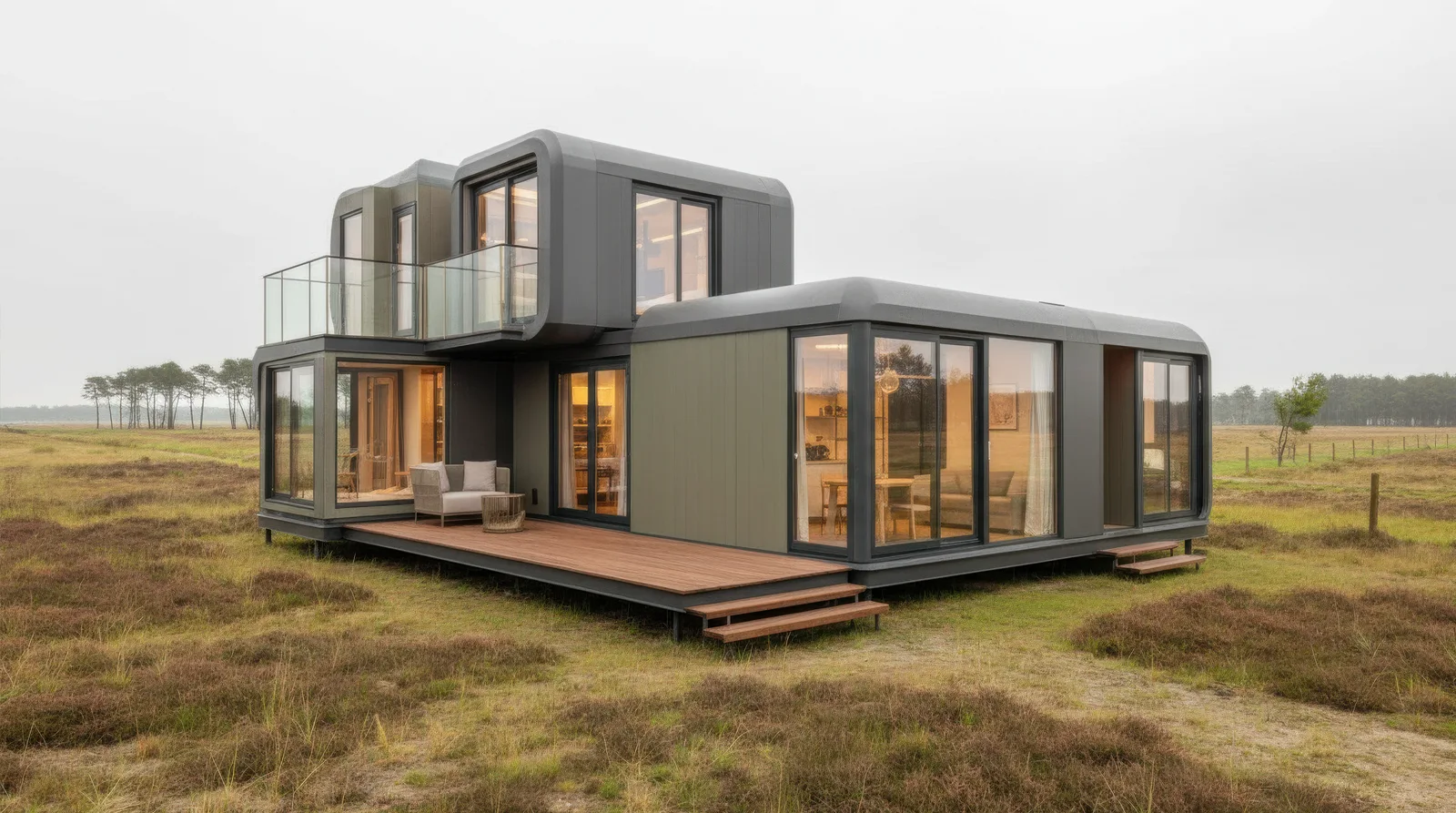Innovative Storage Solutions for Dutch Homes: Maximizing Every Centimeter
The Netherlands, a nation famous for its innovative spirit and often compact living spaces, presents a unique challenge and opportunity for homeowners: how do we create homes that feel expansive, organized, and utterly functional, even when every square centimeter counts? It’s not just about tidiness; it’s about crafting an environment that supports our daily lives, enhances our well-being, and reflects the ingenuity that runs deep in Dutch design.
From the charming canal houses of Amsterdam to the modern apartments springing up in urban centers, the quest for efficient living is a constant. But what does “efficient” truly mean when it comes to storage? It’s more than just cupboards and drawers; it’s about intelligent design, about materials that perform, and about understanding the very fabric of your home. This article will unravel the secrets to maximizing space, exploring cutting-edge solutions, and understanding why the Dutch approach to home organization is as much about clever engineering as it is about aesthetics.
Basic Concepts: Understanding the Dutch Spatial Puzzle
Before we dive into the innovative solutions, it’s vital to grasp the foundational concepts that shape Dutch homes and, consequently, their storage needs.
What is a “Plattegrond”?
In the Netherlands, the plattegrond, or floor plan, is king. Property descriptions often place a significant emphasis on precise measurements and layouts. Understanding your plattegrond isn’t just about knowing where the walls are; it’s about identifying dead spaces, overlooked corners, and vertical opportunities. A well-considered storage plan begins with a meticulous study of your home’s blueprint, identifying areas that are traditionally underutilized.
The “Tussenwoning” and “Hoekwoning” Dilemma
Many Dutch homes are either tussenwoningen (terraced houses) or hoekwoningen (corner houses). These popular housing types often come with specific spatial constraints. Terraced homes, in particular, can be narrow and deep, emphasizing the need for vertical storage and clever hallway solutions. Corner houses, while offering more light and often slightly larger plots, still benefit immensely from integrated, space-saving designs that avoid cluttering their potentially more open layouts.
Why is “Duurzaamheid” Relevant to Storage?
You might wonder why sustainability, or duurzaamheid, factors into storage. It’s simple: a well-organized home encourages less consumption and more mindful living. When you know where everything is, you’re less likely to buy duplicates. Moreover, sustainable storage solutions often integrate natural and durable materials, designed to last. This aligns perfectly with the Dutch appreciation for quality and longevity over disposable trends.
Innovative Storage Solutions: Making Every Centimeter Work Harder
Forget the old adage that you can never have enough storage. The modern Dutch approach reframes the question: how can we make the storage we *do* have work smarter, integrate seamlessly, and even become a design feature?
The Rise of Integrated and Built-In Solutions
One of the most profound shifts in Dutch home design is the move away from freestanding furniture towards integrated, custom-built solutions. Why waste an inch?
- Wall-to-Wall and Floor-to-Ceiling Cabinetry: This isn’t just about maximizing volume. It’s about creating clean lines, reducing dust traps, and offering an often surprising amount of concealed storage. Imagine a seemingly plain wall that, with a subtle push, reveals a home office, a laundry alcove, or an entire wardrobe. This requires precise measurement and professional installation, transforming architectural features into functional elements.
- Staircase Storage: The space beneath stairs is a classic storage opportunity often underutilized. Modern Dutch designs transform these voids into elegant pull-out drawers for shoes, push-to-open cupboards for vacuum cleaners, or even integrated bookshelves that ascend with the stairs. It’s an architectural trick that adds significant utility without encroaching on living space.
- Integrated Beds and Seating: In smaller apartments, the bed can become a storage powerhouse. Platform beds with deep drawers or lift-up mechanisms offer vast under-bed storage. Similarly, built-in banquettes in dining areas or window seats can cleverly conceal blanket boxes or toy storage, providing dual functionality.
Verticality: The Sky’s the Limit (Almost!)
When horizontal space is limited, the only way is up. Dutch designers are masters of vertical optimization, turning walls into interactive storage landscapes.
- Vertical Garden Walls: While not strictly for household items, an indoor vertical garden wall can free up valuable windowsill or floor space, adding greenery and improving air quality in a compact footprint.
- Floor-to-Ceiling Bookcases and Display Units: Beyond traditional bookshelves, consider systems that allow for modular reconfigurations, incorporating closed cabinets, open shelving, and even integrated lighting. These can serve as room dividers in open-plan spaces, providing both storage and subtle delineation.
- Pull-Down and Lift-Up Mechanisms: In kitchens, particularly, innovative hardware allows cabinets to be positioned higher, with mechanisms that pull shelves down to counter height. This makes upper storage accessible for everyone and maximizes often-dead space above eye level.
The Magic of Multi-Functional Furniture
Why have a piece of furniture perform only one task when it can do several? Multi-functional furniture is a cornerstone of smart Dutch living, designed to adapt to changing needs throughout the day.
- Ottomans with Storage: A common sight, but increasingly sophisticated, these can serve as extra seating, footrests, and hidden storage for throws, magazines, or children’s toys.
- Dining Tables that Expand or Fold: For those who love to entertain but lack a dedicated dining room, tables that can extend to accommodate more guests or fold away completely when not in use are invaluable.
- Sofa Beds and Modular Seating: Perfect for unexpected guests, sofa beds have evolved beyond bulky, uncomfortable options. Modern designs are sleek, comfortable, and often include integrated storage drawers. Modular sofas can be reconfigured to suit different occasions, providing adaptability in dynamic living spaces.
Beyond the Obvious: Unexpected Storage Spaces
Where else can we tuck things away? The Dutch approach examines every nook and cranny.
- Kickboard Drawers: The plinth beneath your kitchen cabinets or bathroom vanity often hides unused space. Custom kickboard drawers are ideal for storing flat items like baking sheets, serving trays, or even pet food bowls.
- Shallow Wall Alcoves: If your home has even slightly recessed walls, consider adding shallow built-in shelves or cupboards. These might only be 15cm deep, but they’re perfect for spices, toiletries, or small decorations, keeping surfaces clutter-free.
- Behind-the-Door Storage: Over-the-door organizers are functional, but built-in, recessed storage behind doors (in pantries, bathrooms, or utility closets) can be a game-changer. Imagine a shallow custom unit specifically designed for cleaning supplies or rarely used appliances.
Materials Matter: Building Smart, Storing Smart
The choice of materials isn’t just about aesthetics; it impacts durability, sustainability, and ultimately, the functionality of your storage solutions.
- Engineered Wood Products (MDF, Plywood): These form the backbone of many custom built-in units. They offer stability, versatility, and can be finished in a myriad of ways, from painted to veneered. Their consistent quality makes them ideal for precise carpentry.
- Sustainable Timbers: For those prioritizing natural aesthetics and environmental responsibility, locally sourced or certified sustainable timbers are increasingly popular. Oak, ash, and pine offer warmth and character, perfect for visible shelving or elegant cabinet fronts.
- Smart Hardware: The unsung heroes of innovative storage are the hinges, runners, and lifting mechanisms. Soft-close drawers, full-extension slides, and well-engineered pivot hinges transform accessibility and user experience. Investing in quality hardware ensures your solutions perform flawlessly for years.
- Integrated Lighting: Don’t underestimate the power of light within your storage. LED strip lights inside wardrobes, pantry pull-outs, or display cabinets not only improve visibility but also elevate the overall aesthetic, making finding items effortless.
Practical Tips for Your Dutch Storage Transformation
Ready to reclaim your space and embrace ingenious storage? Here are some actionable steps.
- Conduct a Thorough Inventory: Before you plan any storage, know what you own. Declutter ruthlessly. Ask yourself: “Have I used this in the last year?” If not, consider donating, selling, or discarding it. You can’t organize clutter, only rearrange it.
- Analyze Your Daily Routines: Observe how you move through your home. What items do you use most frequently? How can storage solutions simplify tasks like cooking, getting ready in the morning, or entering/exiting your home? Store items where they are used.
- Prioritize Vertical Space: Look at every wall, every corner. Can you add shelves? Can you utilize the space above doors or windows?
- Consult with Professionals: While exciting to envision, truly integrated, built-in storage requires expertise. Engage with an interior architect or a specialized custom cabinetry maker. They can assess structural possibilities, offer innovative design ideas you might not have considered, and ensure a flawless execution that meets Dutch building standards. Do not attempt complex built-in solutions as a DIY project; precision is paramount.
- Consider Adaptability: Life changes. Your storage solutions should ideally be flexible. Modular systems or designs that can be reconfigured allow your home to evolve with your needs.
- Invest in Quality: Skimping on materials or installation for bespoke storage will lead to disappointment. Quality components and professional craftsmanship ensure durability and functionality. This is a long-term investment in your home’s efficiency and value.
Conclusion: The Art of Living Expansively in Compact Spaces
The Dutch approach to home organization is a masterclass in making every square centimeter sing. It’s an optimistic vision where less space doesn’t mean less life, but rather more thoughtful, integrated, and innovative living. By embracing custom, built-in solutions, leveraging verticality, and prioritizing multi-functional furniture, Dutch homes become models of efficiency and elegance.
It’s about understanding that storage isn’t just about hiding things away; it’s about optimizing flow, enhancing comfort, and creating an environment that feels both expansive and deeply personal. So, whether you’re in a historic canal house or a contemporary apartment, the principles remain the same: look up, look deep, and think creatively – with the right professional guidance, your Dutch home can truly maximize its full, ingenious potential.

